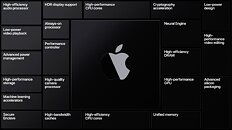Basemark Releases Breaking Limit Cross-Platform Ray Tracing Benchmark
Basemark announced today the release of a groundbreaking cross-platform ray tracing benchmark, GPUScore: Breaking Limit. This new benchmark is designed to evaluate the performance of the full range of ray tracing capable devices, including smartphones, tablets, laptops and high-end desktops with discrete GPUs. With support for multiple operating systems and graphics APIs, Breaking Limit provides a comprehensive performance evaluation across various platforms and devices.
As ray tracing technology becomes increasingly prevalent in consumer electronics, from high-end desktops to portable devices like laptops and smartphones, there is a critical need for a benchmark that can accurately assess and compare performance across different devices and platforms. Breaking Limit addresses this gap, providing valuable insights into how various devices handle hardware-accelerated graphics rendering. The benchmark is an essential tool for developers, manufacturers, and consumers to measure and compare the performance of real-time ray tracing rendering across different hardware and software environments reliably.
As ray tracing technology becomes increasingly prevalent in consumer electronics, from high-end desktops to portable devices like laptops and smartphones, there is a critical need for a benchmark that can accurately assess and compare performance across different devices and platforms. Breaking Limit addresses this gap, providing valuable insights into how various devices handle hardware-accelerated graphics rendering. The benchmark is an essential tool for developers, manufacturers, and consumers to measure and compare the performance of real-time ray tracing rendering across different hardware and software environments reliably.






















